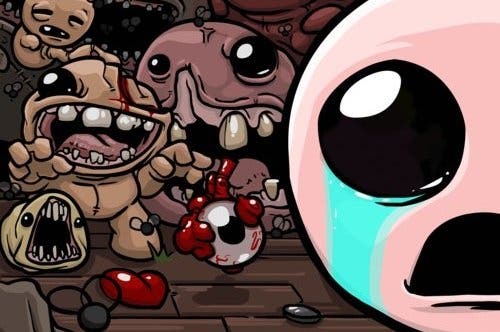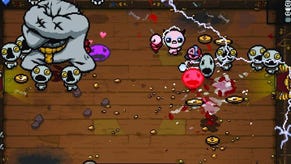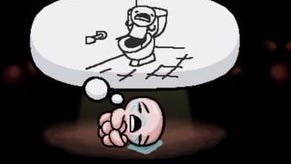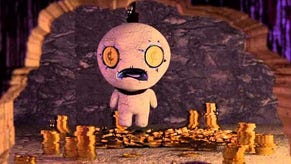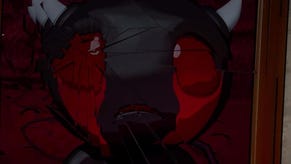The Binding of Isaac: Rebirth review
Mother re-issues.
The Binding of Isaac is a game about child abuse, both mythological and semi-autobiographical. While its numerous opaque endings are open to interpretation, there is no way to shy away from its distressing foundational theme. It's alluded to in the game's title, borrowed from the myth that features in all three major monotheistic religions in which Abraham comes close to sacrificing his bewildered child, Isaac. And it's made explicit in the game's introductory sequence, which depicts a young boy being chased by his zealot mother, who has been driven to fanaticism by a diet of religious TV and now wants to cleanse her son of his sin with the aid of a carving knife. The eponymous Isaac flees his parent and retreats into the basement beneath the family's house, where responsibility for his safety passes to us.
For Edmund McMillen, the co-creator who has made clear this is an exploration of his own childhood experiences living with a family of recovering drug addicts and fundamentalist Christianity, his basement sanctuary was probably metaphorical. In The Binding of Isaac it's a tangible place, a warren of rooms and floors filled with Dante-esque horrors that leads deeper into the earth and Isaac's sense of physical and psychological isolation. It's a shifting maze that changes with each fresh game, a design that reinforces in us the sense of confusion and fear the protagonist feels. Neither Isaac nor we quite know what horrors stand on the other side of the next doorway. And they are horrors indeed - toothy maggots, sobbing babies, lanky spiders and giant hell blobs that spit blood and faecal matter. These grotesque visions are only somewhat tempered by McMillen's cartoonish, flippant art-style.
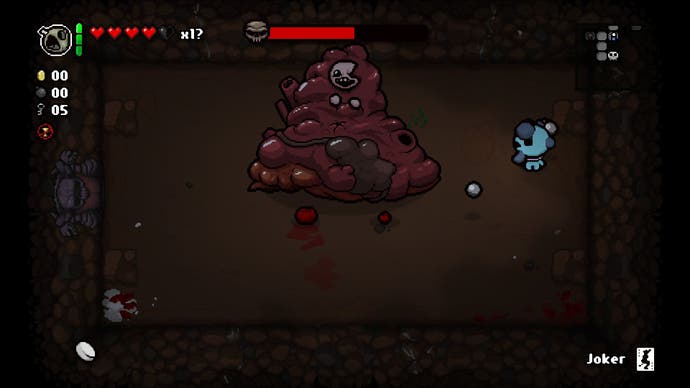
The urge to protect Isaac and help him to survive in such a relentlessly hostile place is strong. It's encouraged by the game's elegant structure. Rather than present a 60 hour epic with thousands of dungeons floors to clear, there are just eight levels through which Isaac must descend. If he loses all of his health then it's an instant game over, and you must start your quest afresh. Each of the game's floors is punctuated with a boss room, in which you must defeat a stronger enemy in order to gain access to the next floor. In the final battle Isaac faces-off against the Freudian final boss that is his own mother. There are further, optional levels to contend with (including a battle with Satan himself), but it's possible to clear the game within an hour if you're vigilant, skilled and, crucially, if the game deals you a favourable hand.
Chance plays its role in terms of the placement of the offensive and defensive items that Isaac can collect in order to improve his capabilities. There are more than a hundred different items (with a slew of new ones created specifically for this definitive version of the original 2011 game). They include everything from spectacles which double Isaac's projectile shots, to wigs that enable him to shatter boulders through to pendants that increase his Zelda-like heart containers and pills that increase his speed or attack power. The majority of these items can be stacked, and, as such, Isaac grows stronger with each new adornment. Some items can be used only temporarily (a bubble that encases Isaac, providing him with a protective layer, for example) and must be recharged with batteries.
As well as the luck of the item draw, your chances of success also depend on the layout of the world that you're given - the game's layout shifts with each new playthrough. Rooms link together via doorways, which remain locked till you clear out whatever enemies sit within. Some doors and chests require a key, and these are in short supply. It's unlikely you'll be able to open every single lock you encounter. The only other default tool in your arsenal are bombs, which are used to clear boulders, damage enemies and open up secret doorways and hatches in the ground. Ideally you'll be given powerful items early in your journey, and access to the game's shops only when you've collected enough coins to make use of their stock, but as the architecture of the game is designed afresh each attempt by an algorithm, you better pray to providence.
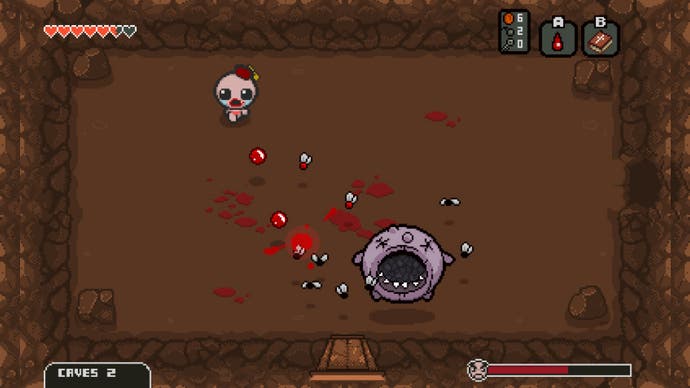
It's a game designed for repeat play and the Spelunky-style thrill of learning to master different foes and elements. Using this mastery to improvise and overcome whatever combination of horrors is sent your way remains absorbing for many hours. In this, the third iteration of the game, the vast variety of items and world features makes every playthrough substantially different and even when you've collected every pick-up in the game (collected usefully in an almanac) the joy of skilful improvisation will bring you back again and again. It is, arguably, the most accessible Rogue-like yet made - a claim bolstered by the new twin-stick control scheme on console, which makes navigating the dungeons and aiming at enemies more precise.
The game is less successful in conveying a clear message. McMillen has filled his twilight world with rich religious iconography, as well as assets that revisit some of his own preoccupations as evidenced throughout his work: blood, faeces, genitals and dysfunctional families.
At times, The Binding of Isaac feels like the product of the psychotherapeutic process, a re-visitation of childhood trauma and confusion, in all of the mess and hope for understanding that journey entails. At times it's a devastatingly personal work, even though the exact shape and nature of the autobiographical nugget at the game's core is unclear. What keeps us from becoming prying voyeurs in this process is the game's surrounding artifice and machinery, which is expertly crafted and designed in such a way as to invite us in to enjoy McMillen's journey. And it is a spectacular, affecting journey, even if its destination is perhaps the creator's alone.
